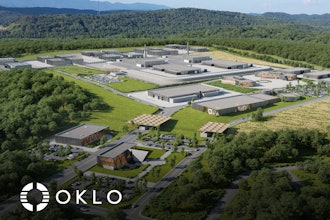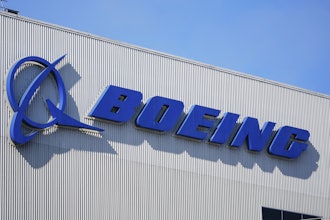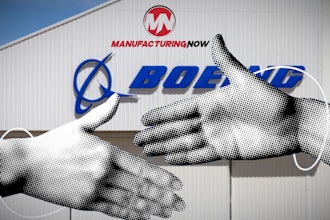Executive summary
Social media is a loaded term that means different things to different
people. Facebook™ and Twitter™ are what spring to mind for most
people, along with images of party photos and 140-character musings.
But those vehicles are far from where social media ends. The lines
between emerging technologies and ones that have become so firmly
entrenched that they are now thought of as “traditional” (like email or
even instant messaging) are blurring, expanding, and continually
changing.
This evolution has brought the social media conversation to a pivotal
point, which is what role, if any, social media has to play in the way
employees interact with each other in a business environment.
Dubious is probably the best word to describe the reactions of many
executives when the subject comes up. Many struggle to see the
value and worry that it might actually cause harm. They already find it
difficult to keep employees from posting personal Facebook or Twitter
updates during work hours. Why provide yet another vehicle for
wasting time?
While it’s easy to understand why companies want to approach social
media with caution, there’s also considerable risk in dismissing it
altogether. Misperceptions about what these technologies mean
could cause businesses to miss out on a major opportunity to reinvent
the way their employees work together—and generate potentially
game-changing benefits in the process. The key is to apply the
concepts of social media in ways that have inherent value in a
business environment.
In this white paper, we’ll examine some of the fundamental differences
between social media in the consumer and business worlds; why
companies should care; and what social technologies mean from a
practical perspective within a business environment. We’ll also discuss
strategies for building a successful social business strategy.
White Paper
From nice-to-have to necessity:
Why companies are getting serious about social business
Table of contents
1 Executive summary
2 Getting down to business
3 Why social business matters
5 The brass tacks
6 Building a social business strategy
8 How Infor delivers on the promise of
social business
Infor Ming.le
The Infor Ming.le technology
foundation—Infor ION
10 Conclusion
2 Infor
Infor is in no way committing to the development or delivery of any specified enhancement,
upgrade, product or functionality. See “disclaimer” paragraph contained herein.
Getting down to business
Perhaps the place to start is with what social media does not mean for businesses, which
brings us right back to the beginning—Facebook and Twitter. While these and other similar
vehicles can be important (even vital) for connecting with customers, they have little to do with
the way businesses are starting to incorporate social technology, or what is now increasingly
being called social business, into their work environments. Certainly, some concepts are the
same. Social media is, after all, innovative and transformational, whether we like it or not.
But the end game is where social media and social business radically diverge.
If asked to choose a single word to describe the guiding principle of social media, the best
option would probably be connection. Social media allows you to connect with everyone
from loved ones to customers who can now share moments and communicate in ways that
were previously not possible.
On the social business side, replace connection with collaboration, again with people but,
more importantly, around processes that directly impact the bottom line. Social business is
about embedding collaboration within people’s everyday work environments, delivering
capabilities so far superior to existing ways of working that they become simply the way
things are done.
While the applications for social business and its potential impact are still evolving, this
opportunity to create a sea change in the way employees think, work, and get things done is
causing businesses to take a good hard look at what social technologies offer.In a recent
study on social business adoption trends and key performance indicators, Gartner Inc. noted:
“The term ‘social media’ is sometimes stigmatized within an organization and immediately
branded a frivolous waste of time. Early implementations monitored what was happening on
the social web or used this new communication channel to broadcast messages to an
intended audience, frequently exposing minimal business benefit. However, businesses are
now focused on marketing, customer support, research and development, human resources,
sales, manufacturing, distribution and executive leadership departments across multiple
industries and geographies. Companies are implementing social strategies to achieve
objectives aligning to their prime metrics.”1
That connection between social business and key organizational metrics is what companies
are now seeking, as the race to establish this technology as a competitive differentiator
heats up.
Social media is about: Social business is about:
People Processes
Connection Collaboration
Moments and experiences Plans and projects
Spontaneity Structure
Entertainment Productivity
Thought sharing Knowledge capture
1 Gartner Business Gets Social Examples Highlight Adoption Trends and Key Performance Indicators, Carol Rozwell and Jenny
Sussin, March 6, 2012
3Infor
Infor is in no way committing to the development or delivery of any specified enhancement,
upgrade, product or functionality. See “disclaimer” paragraph contained herein.
Why social business matters
Despite the potential of social business, many companies are still asking the question of why?
They wonder “between email, instant messaging (IM), SharePoint®, and LinkedIn®, don’t we
have the collaboration angle covered?” There’s no question that these technologies have
been brought into the fold as standard ways of doing business, but the reality is, they are
imperfect at best.
One major problem is the massive loss of information that accompanies tools like email or IM.
While they are excellent at facilitating communications, email and IM are abysmal at capturing
them. These interactions take place outside of organizational systems, causing information to
reside in silos that depend not on established processes for tracking it, but on individuals.
From the details behind why a project succeeded or failed to the reasons for choosing a
particular supplier, this information (or what could be more accurately described as
institutional knowledge) holds the key to making better decisions, ensuring mistakes aren’t
repeated and, in short, improving the overall health of a business. The fact that it is lost has
become an accepted part of the way we work.
A second significant issue is the sheer volume of information that employees are faced with
these days. Email, which is arguably the original business collaboration tool, is so enmeshed
in daily work life that people are becoming overwhelmed. McKinsey analysts report that
knowledge workers typically spend 28% of each day (some 13 hours per week on average)
reading, writing, and responding to emails.2 The problem has become so severe that some
corporations have banned internal email in hopes of recovering some productivity.3 However,
evidence supporting the value of that approach remains in short supply.
These challenges are causing companies to look for better ways of communicating and
collaborating. Social business technology, with its potential to address these issues and
revolutionize the way people work, is beginning to lead the charge.
According to the analyst firm IDC, adoption of enterprise social software grew significantly in
2012. In its “State of Enterprise Social Software Adoption Report” from 2012, IDC found:
“The deployment of enterprise social software has grown markedly over the past 12 months
as business decision makers respond to the social customer and empowered employees. As
companies respond, they are targeting a set of core capabilities and functionalities to initiate
and tie together current social initiatives that may be already active in separate systems and
business processes. IDC’s Social Business Survey conducted in 2012 showed an
overwhelming acceleration in not only the number of companies that have deployed
enterprise social software but the maturity of use cases.”4
Gartner also notes the importance of understanding social technology, saying:
“The social software market reflects advancement in adoption and sophistication in enterprise
demands, and reflects growing business expectations for serious social solutions. Leaders
representing many areas of IT need to stay on top of this fast evolving space not just to
understand social capabilities, but also to understand the implications that social will have on
related technologies.”5
2 Jacques Bughin, Michael Chui, and James Manyika, Capturing business value with social technologies, McKinsey Quarterly,
November 2012, p. 2.
3 Ty Kiisel, “CEO Bans E-Mail,” forbes.com, November 30, 2011
4 IDC “The State of Enterprise Social Software Adoption in 2012”, Doc # 236637, September 2012
5 Gartner Hype Cycle for Social Software, 2012, Susan Landry, July 30, 2012
4 Infor
Infor is in no way committing to the development or delivery of any specified enhancement,
upgrade, product or functionality. See “disclaimer” paragraph contained herein.
While the benefits of social technology may initially have been considered important but not
exactly measurable, companies are now looking at social business initiatives because of their
potential to drive bottom-line benefits, such as:
• Increasing productivity—The words productivity and social media aren’t often put together
in a positive way, but helping people work more efficiently is one of the major promises of
social business technology. Reducing email loads, putting information where people can
find it easily, and allowing employees to collaborate in context (of data, conversation trails,
project plans, etc.) should indeed make them more productive—and improve overall
performance in the process. The McKinsey study suggests that the 28% of time
employees spend on email could be cut by about 8% through intelligent use of more
advanced collaboration tools.6 That result is far from a complete solution, but would
represent a very important start.
• Retaining vital corporate knowledge—Social business allows companies to take
advantage of information that is currently lost through technologies like email and instant
messaging. This information represents the “why” and the “how” of the qualities that make
a company what it is and can hold the key to uncovering game-changing opportunities.
• Attracting and retaining top talent—Expectations for technology have changed, most
markedly for employees just entering the workforce, but also for those with decades of
work experience. People have come to take for granted the technology they use in their
personal lives, and they now expect business software to deliver the same fun, intuitive,
easy-to-use experience. Social business and other technologies like mobility, analytics,
and the overall user experience allow companies to meet these higher expectations
Although metrics in this area, which most often falls under the rather broad umbrella of
“employee satisfaction,” are typically soft, some harder evidence of its benefits is starting
to emerge. All In, a recently published book by consultants Adrian Gostick and Chester
Elton, makes a link between having employees who are “engaged, enabled, and
energized” and achieving high-performance business results (defined as achieving
operational margins of 27% or better during a period of economic difficulty and based on
research by Towers Watson).7
Companies increasingly will look to exploit the connection between satisfaction and
productivity, with social business as a major driving factor.
• Improving decision making—Social business technologies make collaboration among
employees easy, but they also deliver information that aids decision making in ways that
tools like email or instant messaging simply cannot.
6 Jacques Bughin, Michael Chui, and James Manyika, Capturing business value with social technologies, McKinsey Quarterly,
November 2012, p. 2.
7 Susan Adams, “New Study: A Happy Workplace Really is Crucial,” forbes.com, April 4, 2012;
5Infor
Infor is in no way committing to the development or delivery of any specified enhancement,
upgrade, product or functionality. See “disclaimer” paragraph contained herein.
The brass tacks
To crystalize the concept of social business technologies, it’s helpful to build a picture of how
those technologies are actually being used. One of the most critical points to understand is
that with social business technology, a collaborative platform is embedded within critical
organizational systems, like enterprise resource planning (ERP) or supply chain management
(SCM) systems. Access is not limited to individuals who typically interact with those systems,
but is extended across the enterprise, making the platform a company’s primary vehicle for all
employee interaction. Documents, videos, photos, plans, and, most importantly, conversations
are all captured, organized, searchable, and auditable. Employees can easily share and find
information and also have information come to them, through both automatic notifications and
business intelligence that is displayed directly on desktops or mobile devices and based on
their specific roles or responsibilities.
Let’s look at an example. Company X has just won a contract to take over management of all
networks for a major retailer. Joe Smith is managing the transition and has 10 members on his
team. Using the collaborative platform provided through his company’s social business
technology, Joe can create a group, with controlled access, where all the conversations and
information for this project can reside.
One of the first steps is to finalize contracts with suppliers. Joe and his team can hold
conversations about various vendors, with information about existing vendors’ invoices,
performance ratings, etc. displayed automatically within their collaborative environment.
(And when the next new deal comes around, they’ll be able to search communications about
this one to identify any issues or advantages associated with particular vendors.) The team
can also post vendor contracts to the site and have their legal team review, comment on, and
approve them.
Later in the project, when additional staff needs to be hired to meet the contract
requirements, HR can get input on job descriptions and resumes. And if the customer agrees
to publicity, the PR team can get approval on the press release and share information about
coverage. And when one of Joe’s key managers leaves suddenly in the middle of the project
to take another job, there will be no need to try to piece together the work she has done;
it will all be stored on the collaborative social business platform.
Finally, when the project goes live, Joe can be automatically notified of any issues that
arise. All of this can be done securely, keeping vital competitive information safe and in the
right hands.
This is just one scenario that illustrates how social business can make collaboration standard
and not just within departments, but between them. In most organizations, collaboration within
departments is strong, as skill sets and activities tend to be fairly congruent. But the big
achievements, such as a product launch, new business acquisition, or organizational
improvement, usually require full communications between production, accounting,
marketing, and logistics in order to succeed. Social business makes collaboration across the
business a reality.
6 Infor
Infor is in no way committing to the development or delivery of any specified enhancement,
upgrade, product or functionality. See “disclaimer” paragraph contained herein.
Building a social business strategy
With any new technology, there is inevitably a learning curve for how to implement and use it
most effectively. For social business, some lessons are still being learned; more questions will
undoubtedly be raised as adoption rates rise and applications for the technology continue to
grow and expand. There are, however, some factors that are critical to consider when
evaluating this technology.
To maximize the benefits of any social business initiative, look for technology that will allow
you to:
• Integrate systems across your business, regardless of origin—Most companies have
highly complex technology landscapes, with systems and the information they store sitting
in siloes. Until recently, this problem was incredibly difficult to solve, requiring complex
customizations and integrations to make disparate applications work together. However,
technology has evolved that makes integrating systems straightforward and simple,
allowing them to connect in a way that makes them work together without being
dependent on each other. Similar to the Internet, one system can be upgraded or even go
down without impacting others.
Integrating your systems maximizes their value, but also makes social business
technology a highly powerful tool. Employees can get the full picture across all areas of
your business, so they can quickly zero in on what matters most and stop making
decisions in isolation.
• Embed social business within organizational systems—The biggest benefits of social
business come from making it an integral part of employees’ work environments and
allowing them to collaborate right alongside the critical information that resides in your
systems, whether that be an unpaid invoice or a detailed product launch plan.
Collaborative tools that simply sit on top of core organizational systems are more likely to
create additional information siloes and duplicated effort, rather than increased
productivity.
• Find information quickly and easily through powerful enterprise search capabilities—As
many businesses have come to realize, having more information doesn’t necessarily
translate into better performance. With the amount of data available to companies growing
exponentially, the goal is transitioning from getting access to information to being able to
quickly find the right information. Social business technologies must incorporate powerful,
organized, and structured search capabilities to address this issue.
• Deliver information directly (and automatically) to users—In addition to making it easy for
users to find information, also look for technology that lets information come to your
employees through what is known as contextual intelligence. A concept that might have
sounded like magic a few years ago, this technology delivers customized, pre-analyzed
key performance indicators (KPIs) directly and automatically to those who need them.
This capability allows decisions to be made in context of supporting data, with employees
collaborating based on up-to-the-minute information.
• Ties mobile and social together—The use of mobile technologies has exploded in the
business world, with more core organizational systems being made available via mobile
devices. As adoption rates continue to grow, the combination of social business and
mobile technologies has the potential to be quite powerful. The ability to upload an image
to a social business platform with the touch of a button via a mobile device (much like one-
touch uploads to Facebook) is but one example of how these technologies can work
together to provide capabilities that cannot be delivered in any other way. The possibilities
are nearly limitless.
7Infor
Infor is in no way committing to the development or delivery of any specified enhancement,
upgrade, product or functionality. See “disclaimer” paragraph contained herein.
While identifying key criteria on the technology side, it’s also critical to understand that
technology is but one piece of the puzzle. It’s essential to consider up-front the challenges
that may arise from a launch and adoption perspective, and then establish a detailed strategy
that allows social business to become an accepted part of your culture. Because the
concepts involved are new to many—and old ways of working are so engrained—the process
of converting hearts and minds will be vital to your overall success. Taking the following two
steps will help build a solid foundation for your social business initiative.
1. Establish clear goals—One of the major blocks to building a successful social business
strategy at this stage is simply how new the concept is to the business world and how firmly
entrenched the perceptions of social media have become. The idea that social business
technology is a Facebook-like time waster can be a challenge to combat
Start by defining clear goals for the initiative that demonstrate the potential for bottom-line
impact.
In the Gartner study on social business adoption trends and key performance indicators,
researchers gave examples of organizations undertaking social business initiatives and some
of the metrics identified for measuring performance. Companies are using key performance
indicators such as:
• Decreasing time to market
• Increasing product quality
• Improving service delivery
• Reduced training time
• Increased forecast accuracy8
Many of these initiatives are so new that results are still being measured. But these metrics
illustrate the growing belief that social business has the potential to drive significant bottom-
line business results.
2. Build a communications and training plan—Social business technologies usually don’t
require much training, as they are built to be intuitive, familiar, and easy to use. However,
breaking work habits that have developed over decades is easier said than done. The goal
should be to make social business a part of your culture. Demonstrating the benefits of this
technology will be essential to encouraging adoption, reducing reliance on email, and,
ultimately, realizing the greatest value from your investment.
8 Gartner Business Gets Social Examples Highlight Adoption Trends and Key Performance Indicators, Carol Rozwell and Jenny
Sussin, March 6, 2012
8 Infor
Infor is in no way committing to the development or delivery of any specified enhancement,
upgrade, product or functionality. See “disclaimer” paragraph contained herein.
How Infor delivers on the promise of social business
Infor® is proud to deliver a unique combination in the enterprise software arena—solutions
backed by decades of practical application and continually enhanced with the latest
technological innovations. Infor’s investment in building groundbreaking social business
technologies is part of our ongoing commitment to redefining business software as you know
it—and changing the way work is done.
When it comes to social business, it’s not enough to simply bring the concept of social into
the workplace. You need technology that unifies both sides of the social business equation,
marrying business information with business processes. Infor’s innovative solutions deliver
this in such a way that they become not social business, but just plain business—in other
words, the way things are done.
Infor’s social business capabilities include:
Infor Ming.le
A comprehensive platform for social collaboration, business process improvement, and
contextual analytics, Infor Ming.leTM gives every user a powerful assortment of advanced
capabilities in an easy-to-use package. This platform becomes an incorporated component of
all major organizational systems, like ERP and enterprise asset management (EAM), and is
available to all users regardless of their roles. Employees can communicate and collaborate,
as well as share information like documents, plans, photos, even videos, from a centralized
location, with all activity captured and easily searchable. Infor Ming.le provides:
• Contextual intelligence— Infor Ming.le combines real-time information from ERP, SCM,
EAM, and financial systems, as well as any other transactional information, on a single
screen. It automatically senses the type of work being done and displays information
relevant to that task without requiring the user to search and store the results.
• Tasks and alerts—Infor’s technology allows transactional information to be transmitted
in real time, so employees can keep up with the progress of important activities.
Users can filter, view, and monitor information to keep tabs on the items that matter most.
Infor Ming.le also includes a workflow interface that can push approvals and alerts to the
appropriate people when problems arise.
• Drillback—Analytics and reports in Infor Ming.le feature full drillback capabilities so you
can see the information supporting the data on your screen. If total costs suddenly spike
on one production line, for example, you can immediately drill down and see which
component of cost changed most to contribute to the increase. You’ll be able to zero in on
issues that matter and keep your operations under control more easily.
• Social objects—Drawing on a concept from the social media world, Infor Ming.le lets users
“follow” particular social objects and people, delivering automatic notices based on
parameters that they define. For example, a sales rep may want to know about everything
that happens with her top customer. With Infor Ming.le, she can “follow” their account to
receive automatic notifications of anything related to it. From past due invoices to
problems with an order, the sales rep can get the latest information from all areas of the
business without having to search for it, putting her in a position to address possible
issues before the customer even knows there’s a problem.
9Infor
Infor is in no way committing to the development or delivery of any specified enhancement,
upgrade, product or functionality. See “disclaimer” paragraph contained herein.
The Infor Ming.le technology foundation—Infor ION
Infor’s Intelligent Open Network (ION) technology is the foundation supporting the power of
Infor Ming.le. Infor ION® is purpose-built middleware that makes connecting disparate systems
simple and straightforward. By drawing on open standards and widely supported data
formats, this technology delivers integration out of the box, along with the ability to leverage
information from many systems simultaneously.
Infor ION generates value through a collection of interrelated technologies that combine to
form a platform for faster growth and better performance across the enterprise. The elements
of the Infor ION platform include:
• Enterprise connectivity—The connective technology behind Infor ION draws on a
completely new approach to integration. In the past, enterprise integration took a hard-
wired approach, similar to the old, analog telephone network. It was appropriate for
systems of an earlier era, but is too expensive and inflexible for today’s requirements. Infor
ION connectivity technology builds on the kind of freedom and agility represented by
Internet technologies—flexible connections, open formats, and industry standard
protocols. As a result, Infor ION supports advanced capabilities right out of the box for
rapid integration, top performance, and easy scalability.
• Business process workflow—Because Infor ION communicates through an industry-
standard, publish-and-subscribe process, the information it transmits can be harnessed to
support advanced workflow and business process management. You can design and
implement workflows in Infor ION to fit your business process so that you can standardize,
monitor, and document the tasks that make the biggest difference to your business.
• Event management—Infor ION solutions can send alerts and route approvals to your
desktop or to a mobile application to keep you fully informed and involved in your
business process, no matter where you’re located at any time of day.
• Mobile—Infor Motion, our mobile technology, is built on the same technologies that drive
Infor ION integration, workflow, and business intelligence, which means you can
implement a mobile strategy as a natural extension of your integration technology.
You won’t need to integrate mobile support as yet another unconnected technology
because you’ll have a seamless technology platform that encompasses the desktop, web,
office, shop floor, field, and your favorite mobile device. You’ll also be able to easily
manage access to mobile applications with central provisioning capabilities. You can drag
and drop users to allow or restrict mobile access and quickly cut off permissions when
changes occur, making management of mobile access simple and straightforward while
keeping your information secure.
About Infor
Infor is fundamentally changing the way information is published and consumed in the enterprise, helping 70,000
customers in 194 countries improve operations, drive growth, and quickly adapt to changes in business demands.
To learn more about Infor, please visit www.infor.com.
Disclaimer
This document reflects the direction Infor may take with regard to the specific product(s) described in this document, all of
which is subject to change by Infor in its sole discretion, with or without notice to you. This document is not a commitment
to you in any way and you should not rely on this document or any of its content in making any decision. Infor is not
committing to develop or deliver any specified enhancement, upgrade, product or functionality, even if such is described
in this document.
Copyright© 2013 Infor. All rights reserved. The word and design marks set forth herein are trademarks and/or registered trademarks of Infor and/or related affiliates and subsidiaries. All other
trademarks listed herein are the property of their respective owners. This document is provided for informational purposes only and does not constitute a commitment to you in any way. The
information, products and services described herein are subject to change at any time without notice. www.infor.com.
INFDTP1334449-EN-US-0913-4
Conclusion
Social media has irrevocably changed the way generations of people interact, and its
influence will undoubtedly continue to grow. While the concepts that social media has given
us hold great potential for the business world, building a successful social business strategy
must consist of more than simply tacking a Facebook-like collaborative platform onto existing
organizational systems.
To truly generate value, social technologies must integrate seamlessly with business
processes to make working within a collaborative platform as common as sending an email
and, eventually, replacing it altogether. The results can be transformative, with the biggest
benefits coming from the ability to harness corporate knowledge in ways that are simply not
possible with the tools most companies employ today. Although the future of social business
technology is still being written, there is little doubt that it is poised to change the way people
work forever, leaving us all to one day marvel at the way things used to be.
641 Avenue of the Americas
New York, NY 10011
800-260-2640
infor.com
Social Business: From nice-to-have to necessity
The use of social media concepts in business environments is growing rapidly: but to many executives, the applications and benefits are unclear. In this white paper, we'll examine how social media and social business differ, how social business is being used, and why companies should care.
Latest in Home



















